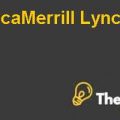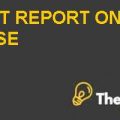Alibaba IPO Dilemma Case Study Solution
Introduction
Alibaba is one of larges leading e-commerce Company worldwide. It has presence in China, India, United States, United Kingdom and Singapore. Alibaba group consists many business divisions. However, two of its most successful businesses are the Taobao.com, Tmall.com. Which are well known for be consumer-to-consumer, and business to consumer online shopping.
Meanwhile, the gross merchandise volume of both businesses is equal to $164 billion that is nearly 80% share of china’s c2c, and b2c shopping. On the other hand, Alibaba group also has some other business divisions such as the online payment system, cloud computing, and mobile internet services.
Furthermore, the company’s announcement to offer Initial public offer, and its request to the Kong stock exchange (HKEx) was not processed, and reject given that company’s governance structure dual class ownership structure that is not permitted by the HKEx. Since, the policy of the HKEx is one share, and one vote.
On the other hand, it can be determined that company also has option to get IPO at NYSK, and NASDAQ as well. Since, these stock exchanges encourage the dual-class ownership structure. So, it is dilemma for the company that where should it get the initial public offering given that HKEx is strict to its policy, whereas others such as NYSE, and NASDAQ welcome the IPO of the company.
Meanwhile, what should company do, should it change its governance structure, and offer IPO in Hong Kong stock exchange, or should it not change its governance structure, and offer its IPO in the NYSE, or the NASDAQ. Indeed, it is necessary for the company to choose best option from the available options.
Problem Statement
What should Alibaba do with respect to the dilemma of offering IPO in the Kong stock exchange, or in the NYSE/NASDAQ? And should it change its governance structure with respect to compliance of HKEx, or should it go with the NYSE, or the NASDAQ? Given that these exchanges welcome company on its existing structure.
Question 1
(A)The dual class share structure refers to the different types of share rights are given to different peoples based on some equity classes. Meanwhile, all shares are issued by the same company. But as of the share type, and its classes, the voting rights differs, so the authority is also different as well. On the other hand, it can be determined that there are two types of assets classes one is known as the class A, and class B.
Since, some classes of the shares are issued to the general public, and other type of shares are issued to the executives of the company, owners, and family members as well. Meanwhile, the shares offered to the executives have more power, and authority than other shares offered to general public. Meanwhile, the executives with shares are more likely to contribute to decision making process, and they also has more powerful rights in term of voting.
Furthermore, the dual assets class structure is supposed to control the majority of shareholders rights to vote although the executive shares are small in quantity, but they control majority shareholders rights. Furthermore, we can find many examples of the companies that are operating in the market, and less than half portion of shares are retained by the company’ executives.
- B) Similarly, it can be determined that reason behind the dual class structure is to allow company founders, owners, and executives control over the company’s operations, long-term investment decisions, or the some other financial decisions that could have negative long-term impacts on the company. So, it allow founders, owner, and executives to capture complete power, and maximum control of decisions made through the special voting rights, and authority due to the special asset classes or shares owned by them.
Therefore, it can be determined that governance structure of the Alibaba’s partnership structure is not different from the dual share structure since in the partnership structure the company is executive body of the 28 persons those would nominate the all candidates for the board of directors. Then, the shareholders would vote for board of directors. Meanwhile, company’s strategic direction is in control of Alibaba’s partners that control overall power, and authority as well. So, it can be determined that it is not much different from the dual class share structure.
(c) Furthermore, the voting premium do not cause to lose money of minority shareholders. Since, having less control is not mean that they are not owner. But, because to protect the founders, and owners the dual stock classes is preferred. Meanwhile, this share class do not cause to lose money of minority shareholders. However, if there is principal agent problem then the minority shareholder would be affected along with the whole company.
Question 2
(A)The NYSE and NASDAQ allow the dual share structure. The major reason behind that is to protect founders, and owner’s vision, and mission that they had at the time of founding the company. Therefore, the dual share structure allow companies to control the decisions at all levels which should be taken to improve the financial position of the company, and make decisions regarding the long-term investments.
Since, the stock exchanges are place where many companies are listed, and these companies have different operational, a financial goals and objectives along with the vision and mission of the company. So, the listed companies in the stock exchange are diversified companies, and belongs to different industries. So, they list the company on the stock exchange to finance the vision or the mission that company’s founder had.
Meanwhile, if the company do not have dual share structure, so the company’s vision might be lost due to the loss of control, or authority of owners, and founder. Therefore, NYSE and NASDAQ allow to have dual share structure to protect the vision of founders, and owners.
(B)On the other hand, the NYSE and NASDAQ allow dual share structure, but given that HKEx do not allow that structure. Since, it has policy of one share one vote. However, if we elaborate the policy of HKEx, then we can understand that Hong Kong stock exchange might want to be more transparent in given equality to the shareholders.
Alibaba IPO Dilemma Harvard Case Solution & Analysis
But, it can also be determined that Hong Kong stock exchange might not have strict control, or the regulatory body to watch the companies as overall, and assess, as NYSE, and NASDAQ has. Indeed, the major aim of the policy is to provide equality. But, if I was at the place of the Charles Li, then I would definitely have allowed that initial public offering in the Hong Kong stock exchange, because it would be one of largest initial public offering, and it would have positive impact on the stock exchanges as well..............
This is just a sample partial case solution. Please place the order on the website to order your own originally done case solution











